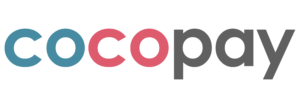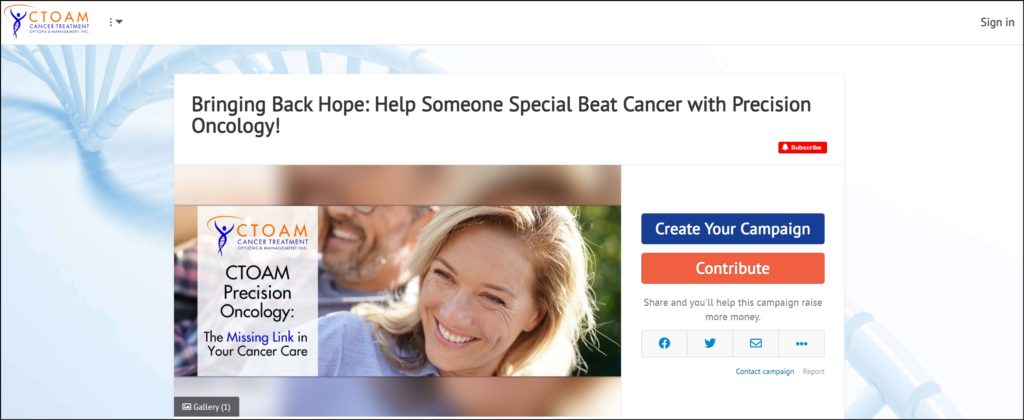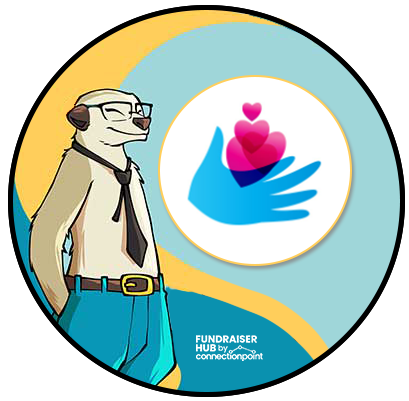We are challenging ‘traditional’ medical crowdfunding with our platform CoCoPay – a place where all stakeholders (including providers) can collaborate to improve access to quality healthcare.
Medical crowdfunding isn’t new for us at ConnectionPoint – our flagship platform, FundRazr, has run tens of thousands of healthcare-focused campaigns since its release in 2009. Campaign owners and their supporters voiced these common challenges:
- How will the campaigner transfer the funds?
- How can donors trust contributions to get where they need to go?
- How can the platform mitigate someone misrepresenting their diagnosis to increase donations?
Studies from academic communities have outlined some concerns as well:
- Does medical crowdfunding worsen the inequities in healthcare access by allowing only a select few to succeed? (1, 2, 3, 4)
- Do patients and their loved ones have to sacrifice privacy to obtain necessary treatments and/or devices? (4, 5)
- Is crowdfunding for medical care taking attention away from our healthcare programs’ inefficiencies, and how so many crucial services are unattainable due to cost? (5, 6)
Our answer to each point is CoCoPay.

My goal with this article is to discuss how CoCoPay approaches medical crowdfunding differently while considering the challenges and concerns outlined above. Hopefully, this will begin new conversations on how to bring quality healthcare to all, no matter who they are or where they live.
Then, one day, maybe we’ll no longer need medical crowdfunding.
Jump to:
- What is CoCoPay?
- Overcoming the challenges of medical crowdfunding
- Addressing concerns about medical crowdfunding
What is CoCoPay?
CoCoPay stands for collaborative community payments. This platform allows individuals to crowdfund for a medical treatment, device, or associated costs not covered by government programs or insurance.
A simple concept, likely familiar to most.
The difference lies here:
CoCoPay partners with healthcare industry providers to connect campaigns with the clinic or manufacturer providing the service or device.
This creates another financing option that they can then offer their patients.

How does CoCoPay work?
Let’s go through the basic steps of how this works:
- With ConnectionPoint’s Microproject™ technology, a medical provider creates a campaign portal, linking their payment accounts and customizing it to their brand.
- Patients receive a quote and payment options from the provider, which include crowdfunding with CoCoPay.
- When patients choose the CoCoPay option, it is often best to have a friend or family member help (so the beneficiary can focus on their health). This is the time to bring that person in. We’ll call this loved one the ‘campaign manager.’
There are two options to move forward from here, depending on how the provider chooses to set up:
- Patients and their loved ones register themselves for a campaign. The campaign manager is directed to the provider’s crowdfunding portal and registers for their campaign.
- The provider creates a campaign on behalf of the beneficiary and sends the campaign and all login details to the beneficiary and campaign manager(s).
- The campaign manager and beneficiary customize this campaign with a story and pictures (with the CoCoPay success team’s help, if needed!) and launch it when ready.
- The campaign manager shares the campaign in whatever way the beneficiary is comfortable with; public (Facebook, Twitter, and LinkedIn) and private (Messenger, WhatsApp, texting, and email) social network options are available.
- Supporters contribute with their credit card, bank account, or PayPal account (depending on the options the medical provider linked).
- Once transactions are processed (which could be immediately or only once the goal is reached, depending on the campaign type chosen), funds are delivered directly to the medical provider without being first directed to CoCoPay or the patient/campaign owner.

Of course, this process has much more depth, particularly when considering the uniqueness of everyone’s medical situation. We will explore these details further as we address the challenges and concerns CoCoPay set out to resolve.
Overcoming the challenges of medical crowdfunding
Challenges are obstacles to overcome. To recap:
- How will the campaigner transfer the funds?
- How can donors trust contributions to get where they need to go?
- How can the platform mitigate someone misrepresenting their diagnosis to increase donations?
By bringing healthcare providers into the process, CoCoPay eliminates these challenges. Campaigns are only open to their patients and can be denied and removed if they violate the terms set out by CoCoPay or the provider.

What about personal campaigns?
CoCoPay does allow individuals to create campaigns to run independently, with funds directed to their personal accounts.
Unfortunately, despite our power to prevent fraudulent campaigns, they still happen. But they are not common. To protect ourselves and our loved ones, we must work together as communities to help those we know personally and employ some critical thinking when considering those we don’t.
The greatest misconception in crowdfunding
An unfortunate view on crowdfunding is that campaigns target some magical audience waiting by their computers for new campaigns to fund.
A fantastic idea… It’s just false.
When we see campaigns running for days or weeks without any contributions, we can guess that their owner was ill-informed about how crowdfunding works. There IS a ready and willing audience for your campaigns… your own social network. But you must do the work to bring the campaign to them.
So, where does the ‘crowd’ come from?
Campaigns target the owner or beneficiary’s social network: friends, family, coworkers, fellow students—people familiar with whoever the campaign benefits. If the beneficiary allows their campaign to be shared, people familiar with whoever shares the campaign for their loved one.
This system focuses on trust. For example, Joe is unlikely to contribute to an individual campaign (unlinked to a provider) for a beneficiary he does not know. If Joe’s best friend, Sue, however, shares a campaign for someone that she knows (but Joe doesn’t), along with a compelling story about why she wants to help this person, Joe is likely to trust that campaign because he trusts Sue.
To help with trust, CoCoPay provides more opportunities for customization and linking social media channels than other platforms. The more content and ‘proof’ provided, the better. Videos are key here – while someone can jump onto my Facebook page and grab some pictures to plop on a campaign and pretend to be me, they won’t be able to replicate me sitting in front of my camera and talking about why I started it.

Addressing concerns about medical crowdfunding
Admittedly, the three main concerns voiced in the academic community are more difficult to address. So, let’s discuss them one by one.
IMPORTANT NOTE: None of these studies had sufficient data to prove that these concerns are true. Each article suggests that we should be aware of these concerns if we are to continue crowdfunding for healthcare.
And I agree. This article’s purpose is not to confirm or deny any of these claims. Instead, I aim to address these concerns using CoCoPay’s resources and functionality.
Concern #1: Does medical crowdfunding worsen the inequities in healthcare access by allowing only a select few to succeed?
Studies from small samples of medical crowdfunding campaigns (primarily on GoFundMe) suggest success might be directly linked to:
- The complexity of the need (less complex = more successful) (1)
- Where the campaign owner falls on the social ladder (higher rung = more access to someone else’s wealth) (1, 3)
- Technological and media literacy (not tech- or social media-savvy = less successful) (2, 3, 6)
- Storytelling ability (less articulate = less successful) (3)
- Perceived deservingness (whether the beneficiary falls into a potential supporter’s political or social ideals) (2, 6)
Concern #1: CoCoPay’s answer
First, most of the details surrounding these concerns are based on the idea that success comes from organic visitors to the platforms’ home pages. We’ve already discussed how this is not the case.
Yes, some campaigns go viral. Sometimes, Mr. Random will land on a campaign from an unrelated source and decide it is worth his help and push it to his own social network, which happens to span the globe and multiple high-income individuals.
Sometimes people win millions of dollars in the lottery, too.
Again, these cases are rare and take away from what makes crowdfunding beneficial and successful.
Second, these points suggest no one is out there to help you through this.
At CoCoPay, we passionately believe in two things:
- Your community loves you and wants to help. But we understand it is hard, sometimes, to ask for help. Perhaps this article can help move past those fears.
- Every single person on our platform can run a successful campaign if they are willing to put in the work.
And this is where CoCoPay truly makes the difference. Success takes effort – but we are here to help every step of the way.
For free.
Our consultations, resources, and even the platform itself are free if you choose that option!
Here are ConnectionPoint’s core values, screenshot from our homepage:

We have created blog articles, toolkits, and webinars, and we make ourselves available multiple times a week to drop in and talk to us if you need extra help. These include technological how-tos, story writing, promotion, and more.
You can even join our Discord channel to discuss strategies with other fundraisers, suggest features for the platform, report bugs, or privately message us your personal questions. And yes, we monitor it daily!
As for the ‘complexity of need’ bit, it’s not the detail of the treatment or device that matters—it’s how the treatment or device will improve someone’s life.
This is also why we highly encourage asking a loved one to help out; those who need medical crowdfunding are often not in a position to learn about it.
I am not saying we will magically fix every case of social inequity in this industry, but we can certainly assist those who want help, no matter what.
Concern #2: Do patients and their loved ones have to sacrifice privacy to obtain necessary treatments and/or devices?
NO. Absolutely not.
One article suggests, “Because campaigns are public and can be shared by anyone, campaigners have little control over who sees these disclosures, and may face unanticipated invasions of privacy, discrimination, or unintended consequences like job loss.” (6)
Campaigns can be shared by anyone with the link. However, there are ways to combat negative consequences.
Concern #2: CoCoPay’s answer
First, only insert details and photographs you are comfortable sharing. You do not need to disclose the grizzly details of your condition or disease if you don’t want to. It is more helpful to describe the POSITIVE impact success will have on your life.
Reach out to us to discuss how you can write your campaign without the details you don’t want (you don’t have to tell us what they are, either).
I understand that certain conditions are stigmatized, and public reputation is crucial to some. It’s our hope that we can help un-stigmatize some of them, but not at the cost of our users’ comfort.
It will be up to you, the campaign manager, to communicate your expectations regarding sharing the campaign with your supporters. Do you want them to go forth and spread the word, or would you rather individually message everyone you trust and not allow anyone to share? This is your campaign; you make the decisions.
CoCoPay also has a customizable privacy feature to help.
You may choose to remove your campaigns from being searchable on outside search engines and the platform itself. This way, no one without the campaign link will ever be able to find it.
This requires some trust in your network, which is why clear and direct communication about your wishes is important.
Concern #3: Is crowdfunding for medical care taking attention away from our healthcare programs’ inefficiencies, and how so many crucial services are unattainable due to cost?
Crowdfunding is young, with ‘mainstream’ crowdfunding rising to popularity around 2008. I believe it will take years to prove if this is true… but that doesn’t mean it is not currently valid. We absolutely should start talking about this now.
What if we reworded that question: Can we use medical crowdfunding to highlight those inefficiencies, drive positive change that is in line with our socioeconomic values, and get people the treatment and/or devices they need?
Concern #3: CoCoPay’s answer
If you look back at ConnectionPoint’s core values, you’ll see one is ‘innovation.’ We aim to move our platforms along with the world as it changes, and we all learn and grow. We also encourage critical thinking and social innovation.
So let’s continue this conversation and combat this concern. I invite anyone who wants to discuss this and any topic surrounding medical crowdfunding to contact us. Finding a solution won’t be easy, but it’ll be impossible if we ignore the matter.
And we’ll keep helping people get the quality healthcare they need in the meantime.
Conclusion
There is no more meaningful gift for our loved ones than health and wellness. While there is not one simple answer to every concern, with continued partnerships, conversation, and innovation, we can allow those we love access to the healthcare they need and deserve.
Remember, we are here for you. Connect with the team anytime to discuss any help you need or concerns about your medical crowdfunding campaign.
Citations
- Kenworthy N, Dong Z, Montgomery A, Fuller E, Berliner L (2020). A cross-sectional study of social inequities in medical crowdfunding campaigns in the United States. PLoS ONE 15(3): e0229760. https://doi.org/10.1371/journal.pone.0229760
- Bassani G, Marinelli N, Vismara S. (2018). Crowdfunding in healthcare. J Technol Transf 44: 1290-1310. http://link.springer.com/10.1007/s10961-018-9663-7
- Van Duynhoven A, Lee A, Michel R, Snyder J, Crooks V, Chow-White P, et al. (2019). Spatially exploring the intersection of socioeconomic status and Canadian cancer-related medical crowdfunding campaigns. BMJ Open. 9(6):e026365. pmid:31227531
- Kenworthy, N. (2019). Globalization and Health 15(Suppl 1):71, https://doi.org/10.1186/s12992-019-0519-1
- Palad, V., & Snyder, J. (2019). “We don’t want him worrying about how he will pay to save his life”: Using medical crowdfunding to explore lived experiences with addiction services in Canada. International Journal of Drug Policy, 65, 73-77. https://doi.org/10.1016/j.drugpo.2018.12.016
- Hunt J (2017). “Mind the gap: charity and crowdfunding in health care. The Lancet Oncology 18(3): P269. https://doi.org/10.1016/S1470-2045(17)30117-1




